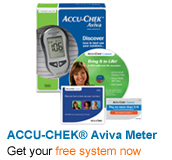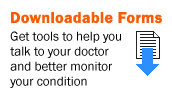| NYC Resources | 311 | Office of the Mayor |
|
|
||||||

 | ||
|
| ||
Hildegarde Payne, RN, CDE Certified Diabetes Educator Associate Director, Ambulatory Care Queens Hospital Center Q. How do I make proper food choices? A. Choose wisely! You do not have to give up the food you like. Portion size is the key to good sugar control. Choose foods with a low fat content such as a small order of French fries with 230 calories instead of a large order with 500 calories. Your food choices will affect your weight, blood sugar levels and how much insulin and/or medications the doctor must order for your diabetes. How much food you eat (portion size) daily will affect your weight and blood sugar levels. The timing of your meals can affect your blood sugar. If you miss meals, it may lower your blood sugar levels. Eat consistent amounts of carbohydrate foods at each meal to avoid blood sugar spike. Q. What is portion control? A. Portion control is managing the amount of food you eat. To begin, you must first find out how much you are eating now. As I ask my patients, start by writing down every meal and snack that you eat in one 24-hour period. Once you see how much you are eating, you can start to reduce and control the portions of food you eat every day.
Tips to Measure Portion Size
Q. How much fluid should I drink each day? A. Drink at least six glasses of 8 ounces of water every day. When your blood sugar level is high, we encourage you to drink one glass every hour to lower your blood sugar. When you exercise, you need to replace the water you lose from sweating. You will know that you need more water if your lips and skin are dry, and your urine is dark yellow. Q. What exercises do you recommend and how often should I do them? A. Another word for exercise is activity or movement. Exercise and diet are natural ways to control your weight and blood sugar level. Nevertheless, people with diabetes may have an increase or a decrease in their blood sugar levels after exercise. Before beginning your exercise plan, discuss it with your doctor. Always test your blood sugar before you exercise. A blood sugar level greater than 100mg/dl is safe. A blood sugar level less than 70mg/dl is dangerous. The best time to exercise is an hour after meals. Walking is an excellent form of exercise. To receive the benefits of walking, you should walk 30 minutes, five days a week. To lose weight, you should walk 60 minutes, five days a week. You can burn 200 calories in a one-hour walk. It's easy on the muscles and joints and rarely causes low blood sugar. Walk at an even pace and make sure you wear comfortable shoes. You should be able to carry on a conversation while walking. If you are short of breath, you are walking too fast. Q. What things can I do to remind me to take my medicine? A. There are several things you can do to make sure you get the most from your prescribed medication.
| ||
|
|
|
|
 |
| Copyright 2014 The City of New York | Contact Us | Privacy Policy | Terms of Use |




